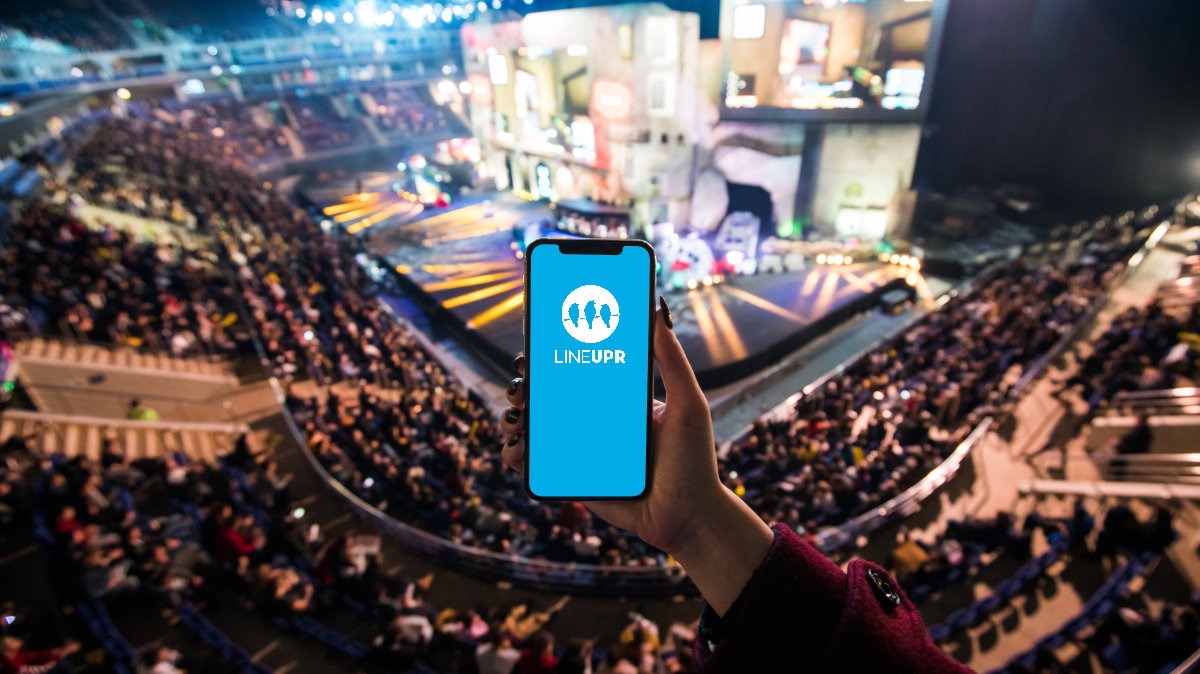Reading time: 8 minutes
Are all push notifications really read? Are they better than in-app notifications? Our experience shows that in-app notifications are better than their reputation says and are more successful in the long term than the push alternative.
Today, the focus is on the direct comparison of in-app and push notifications. If you ask organizers, most of them prefer push notifications for their event apps. However, this desire springs from false or outdated assumptions. We will subsequently clear up and show you what the various types of messages technically mean, what advantages and disadvantages arise for the organizers and participants, and what we think about it.
Push Notifications
When organizers hear the terms “send notifications” and “event apps” together, most instinctively assume push notifications. It’s the classic form of notifications, as we all know from our installed apps. In simple terms, the app can send a signal to the smartphone. Depending on the settings of the smartphone, it rings, vibrates or activates a notification on the display. The app itself does not have to be opened by the user before. This message type is thus able to trigger an activity for the user without having to be active in advance.
In-App Notifications
Unlike push notifications, in-app notifications cannot actively “address” the smartphone, but are only active in the app itself. So if the organizer sends an in-app notification, then the user’s device will not respond to it automatically, so it neither rings nor vibrates, nor shows a notification on the home screen. Here, the initial activity must come from the user. Only when he opens the app in question the message will be displayed.
What do Organizers Think?
Organizers actually always want push notifications for their apps. This has two main reasons. First, they are simply accustomed to seeing messages directly on their smartphone from apps installed from the app store. The second reason is the fear that their visitors do not receive the messages that they sent. Organizers of course only send relevant messages to their guests, who absolutely must read them. The push notification ensures that guests receive this message without opening the app. Many organizers believe that their push notifications are more likely to be read than in-app notifications.
Both of these arguments are outdated and can also be solved with in-app notifications, but more on that in the section “Our point of view”.
What do Participants Think?
For participants, the prevailing opinion is not as clear as with the organizers. Although a relevant mass can handle push notifications very well, the vast majority reject them, at least as far as event apps are concerned. Many people find the constant vibration of their smartphones at events very annoying and simply turn off the push function of the app. Although there is no valid data, if you look around a bit, it quickly becomes clear that most people switch off the push function after at least three useless messages. In contrast to the organizer, the participants’ fear of missing notifications at events is rather low. There are certainly apps where push notifications are very useful, but for the most part, it gets annoying over time. This is also shown by the trend to generally disable the push function on the smartphone.
Push Notifications vs. In-App Notifications
With both push and in-app notifications, it’s about providing your visitors with the latest news. Only the way to the destination is different. Here the pros and cons are summarized:
Benefits of Push
User receives a notification without being active.
Disadvantages of Push
User is interrupted during his activity -> unwanted messages or inappropriate situations lead to rejection and negative emotions.
Benefits of In-App
Users can independently determine when they want to deal with the event and relevant information and then they receive the notifications.
Disadvantages of In-App
Users must become active to receive notifications.
Our Point of View
At LineUpr we currently rely exclusively on in-app notifications. The reasons are both technical in nature and because of our vision. After more than 2 years of experience and more than 700 accompanied events, however, our opinion has changed a bit.
Vision
We admit it. That LineUpr apps do not allow push notification is originally due to the fact that it was not technically possible at that time (more about that). However, having attended more events week after week and immersing ourselves deeply in the industry, this original limitation has become more and more our vision. At the heart of LineUpr should always be a simple, intuitive product that meets the needs of the organizers, but primarily focuses on the participant. Many of them are annoyed by the many unnecessary push messages from the event apps. Organizers tend to spread every little change as widely as possible. The guests tend to care less about this and feel increasingly bothered by the masses of notifications.
An event app should never interrupt or destroy the real programme flow. It should support the participants, always provide them with the latest information and strengthen the positive feeling at the event. This is much better guaranteed with in-app notifications than with push notifications.
Technical limitation
All event apps from LineUpr are web apps. When we launched LineUpr, it was not technically possible to send push messages using a web app. Meanwhile, the Web technology has evolved and it is possible, but unfortunately so far only for Android systems. Apple or iOS does not yet allow this feature for web apps. Until both major operating systems allow push notifications, we cannot release this feature yet because users find it difficult to communicate when the feature works for one but not for another.
Our opinion
Our opinion already came out in the section “Vision”. We clearly prefer in-app notifications, but we will not refuse push notifications. As soon as Apple allows this function, we will implement it. Our goal, however, is to convince every organizer of the in-app variation. Everyone can certainly understand how annoying it is when you’re in a stimulating conversation and this is interrupted because your smartphone rings, only to tell you that the buffet has just opened. However, if the user actively opens the app, he is ready for event information. As an organizer, you want to communicate with your guests exactly in this state, because they not only see and read the message here but also really take it in and do not mentally push it away. Our event data clearly shows that the in-app notifications are on average the third most open pages. And that is all the more remarkable since the first active action clearly has to come from the user. Here his attention is therefore significantly greater than with push interruptions at approximately the same reader rate.
Summary
Organizers always talk about push messages when communicating with an event app. The in-app version is seen as rather critical because they are afraid that their messages will not be read. Event participants see exactly the opposite and could very well do without the constant vibration of their smartphones. We understand why organizers always call for push notifications but at the same time, we can prove with data that in-app notifications are significantly better than their reputation says. They are very well received and are read by the participants, so you do not have to worry about information being lost. Push notifications, on the other hand, often hit the participants in awkward moments and they tend to click the notification away. So although they have seen it, they have not really recorded it.
Feedback
What is your opinion on push notifications vs. in-app notifications? Do you also switch off your push notifications? Do you still have questions which we could not answer? We look forward to your answers.


